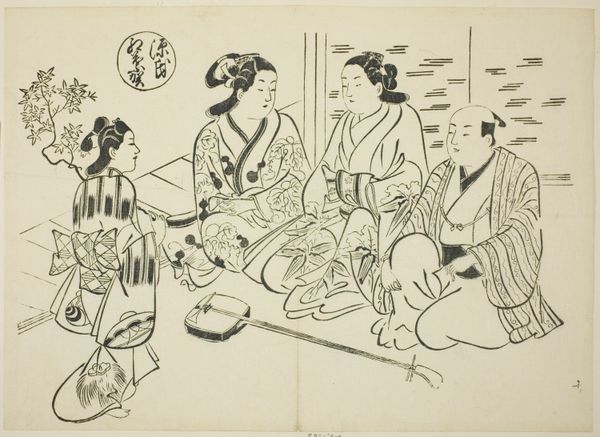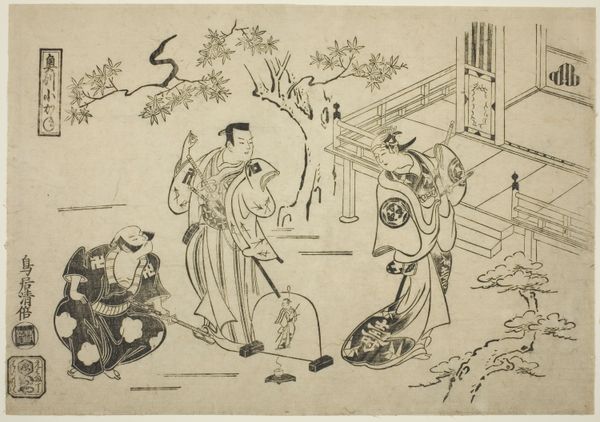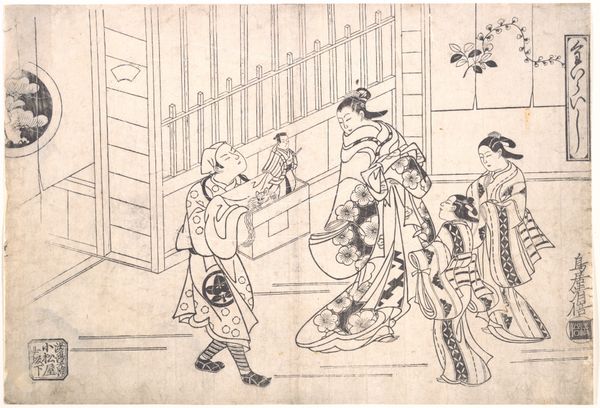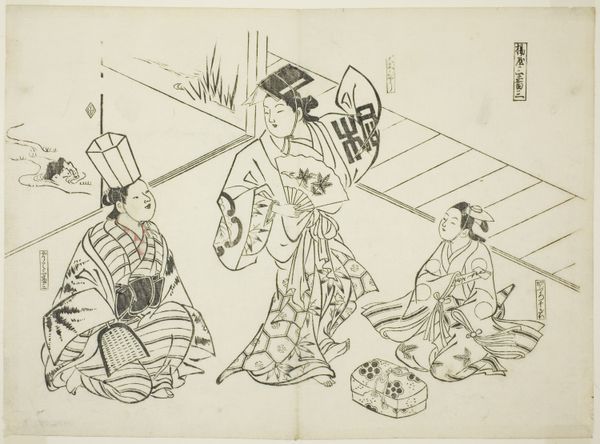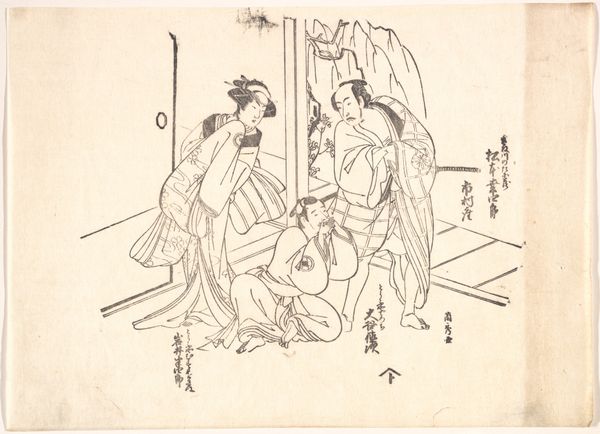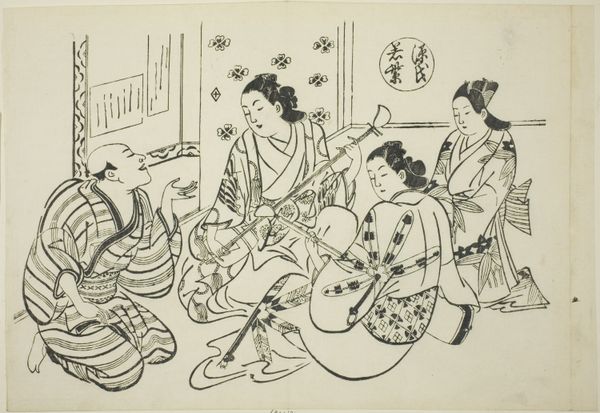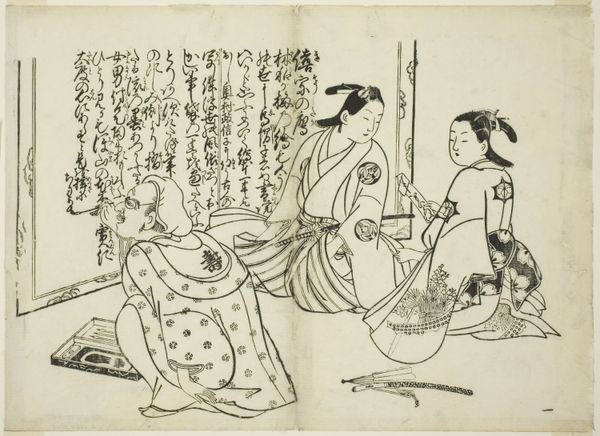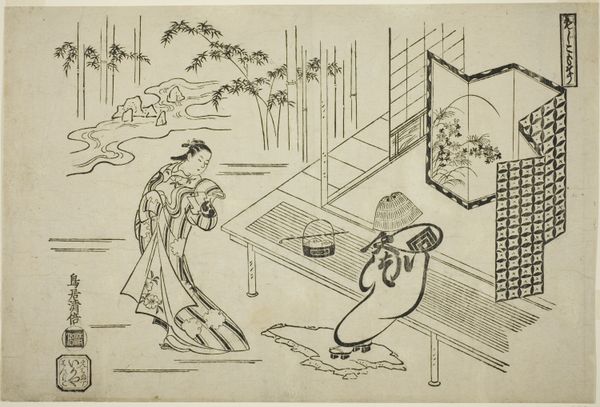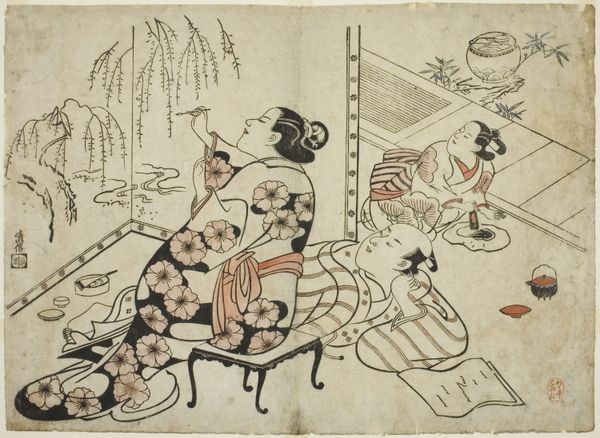
The Dressing Room of a Puppet Theater, the table of contents from the series "Famous Scenes from Japanese Puppet Plays (Yamato irotake)" c. 1705 - 1706
0:00
0:00
print, paper, woodcut
#
narrative-art
# print
#
asian-art
#
ukiyo-e
#
figuration
#
paper
#
woodcut
#
line
#
genre-painting
Dimensions: 27.1 × 37.8 cm
Copyright: Public Domain
Curator: Here we have Okumura Masanobu's "The Dressing Room of a Puppet Theater," which functioned as a table of contents from the series “Famous Scenes from Japanese Puppet Plays,” created around 1705 or 1706. This print uses woodcut on paper, and is part of the Art Institute of Chicago’s collection. Editor: Whoa, that’s a full house backstage! It feels so immediate, like a snapshot of controlled chaos. There's such a wonderful sense of movement, even in the static print; I almost hear the murmurs and shuffling. Curator: It does offer an intimate look into a rarely depicted space. What I find compelling is how it blurs the lines between performance and reality, inviting reflection on the artificiality of constructed narratives, very similar to current debates in theatre. Editor: Artificiality for sure, but isn't there a strange intimacy here too? I am captivated by that single performer carefully adjusting the puppet. Curator: Right. This reflects Japan's rich tradition of puppet theater, which held great cultural importance as a storytelling medium. Ukiyo-e prints, like this, allowed for wider access to these stories and performances. This artwork also captures aspects of labor and the usually concealed parts that go into the theatrical production. Editor: It’s like peering behind the curtain—a real deconstruction of artifice! I think its scale is interesting because as a small, intimate object, the print depicts expansive storytelling and elaborate craftsmanship; it encapsulates different layers. The line work is striking. Curator: Indeed. The bold outlines and minimal shading contribute to its accessibility, reflecting the print's purpose as a popular art form. This aesthetic also evokes a particular visual culture that persists through graphic design and animation today, so that’s also a very significant part of this visual culture. Editor: Seeing it, it’s almost like the starting point for the animation style that influenced manga. It's simple but effective in its storytelling. Masanobu definitely had an understanding of how to capture energy with such restraint. Curator: Considering the themes explored and the history attached to this image, it speaks volumes about labor, art, history and storytelling even after all these centuries. Editor: I concur, such is the unique magic that happens when something so carefully wrought begins speaking across time.
Comments
No comments
Be the first to comment and join the conversation on the ultimate creative platform.
